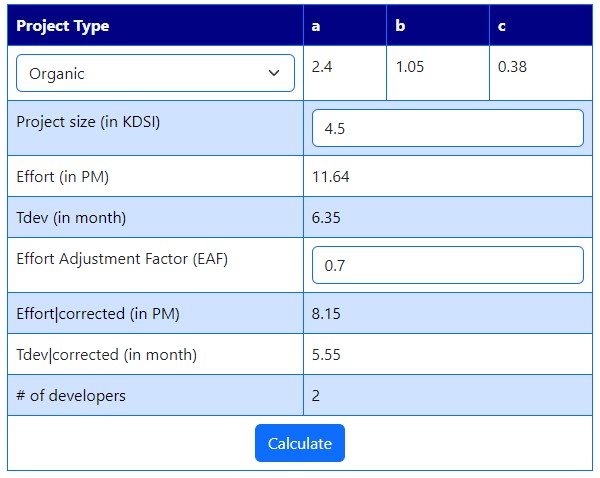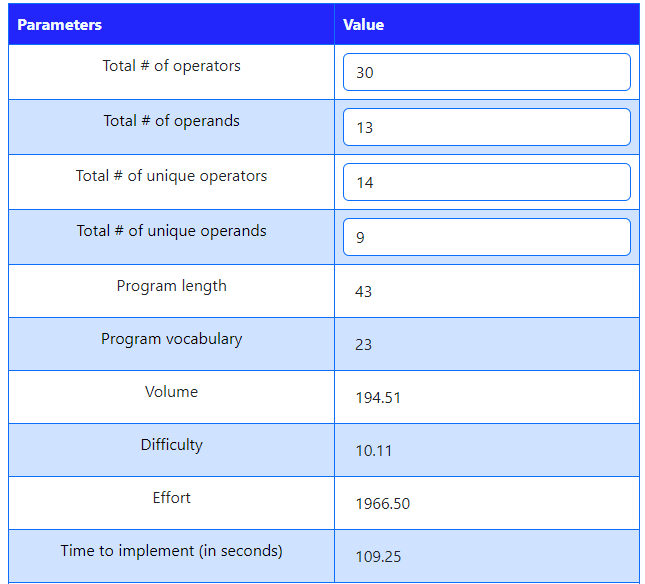Click submit to view solution
Considering your immense expertise in software development, The Absolute Beginners Inc. has recently allotted you a mega project. The goal of the project is to create a database of all Hindi films released since 2000. The software would allow one to generate a list of top ten hit films, top ten flop films, best comedy films, and so on. Using your prior experience you have decided the approximate sizes of each module of the software as follows:
- Data entry (0.9 KDSI)
- Data update (0.7 KDSI)
- Query (0.9 KDSI)
- Report generation and display (2 KDSI)
Also take into consideration the following cost drivers with their ratings:
- Storage constraints (Low)
- Experience in developing similar software (High)
- Programming capabilities of the developers (High)
- Application of software engineering methods (High)
- Use of software tools (High)
(All other cost drivers have nominal rating).
Now answer the following:
- Applying intermediate COCOMO estimate the minimum size of the team you would require to develop this system
- Assuming that your client would pay Rs. 50,000 per month of development, how much would be the likely billing?
Learning Objectives:
- Identify type of a project as per COCOMO
- Prepare an estimate of required effort and cost
Limitations: Values presented here are arbitrary and doesn't relate to real life
Note: The above example has been adapted from COCOMO (Constructive Cost Model), Seminar on Software Cost Estimation WS 2002 / 2003, presented by Nancy Merlo – Schett.
int
main(int argc, char **argv)
{
int x = 10;
int y = 20;
int sum;
sum = x + y;
printf("Sum of %d and %d is: %d\n", x, y, sum);
return 0;
}
The Absolute Beginners Inc. is again at your door! This time their demand is, however, simple. They have a C program, which computes the area of a circle (code shown below). They want it to be rewritten in Java.
int
main(int argc, char **argv)
{
int radius = 12.34;
printf("Area of the circle with radius %f is: %f\n", radius, area(radius));
return 0;
}
float
area(float r) {
return 22 * r * r / 7;
}
Using Halstead's metrics estimate the effort required to recreate this program.
Learning Objectives:
- Determining estimated effort using Halstead's metrics

Applications experience (high): 0.91
Programming language experience (high): 0.95
Application of software engineering methods (high): 0.91
Use of software tools (high): 0.91
Other cost drivers have nominal values (= 1). So, EAF = 0.91 * 0.95 * 0.91 * 0.91 = 0.70
| The Operators are | The operands are |
|
|

| The Operators are | The operands are |
|
|